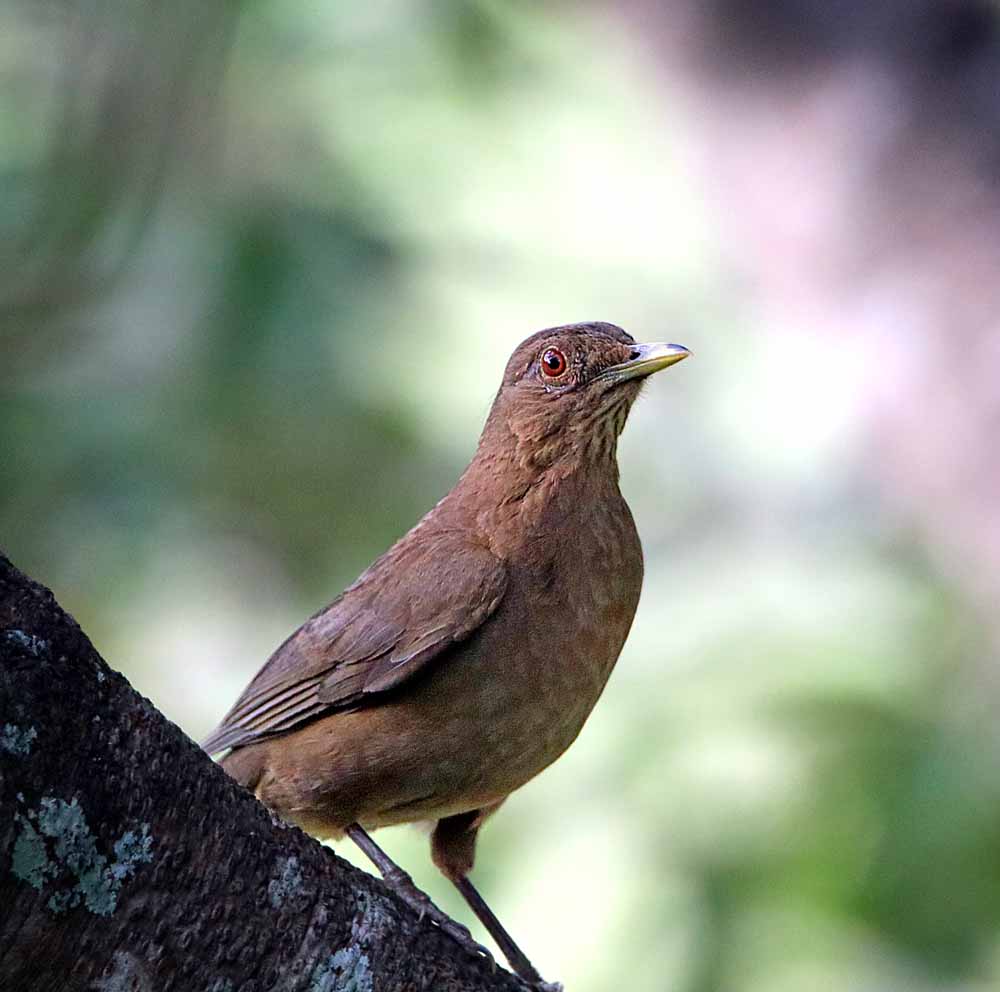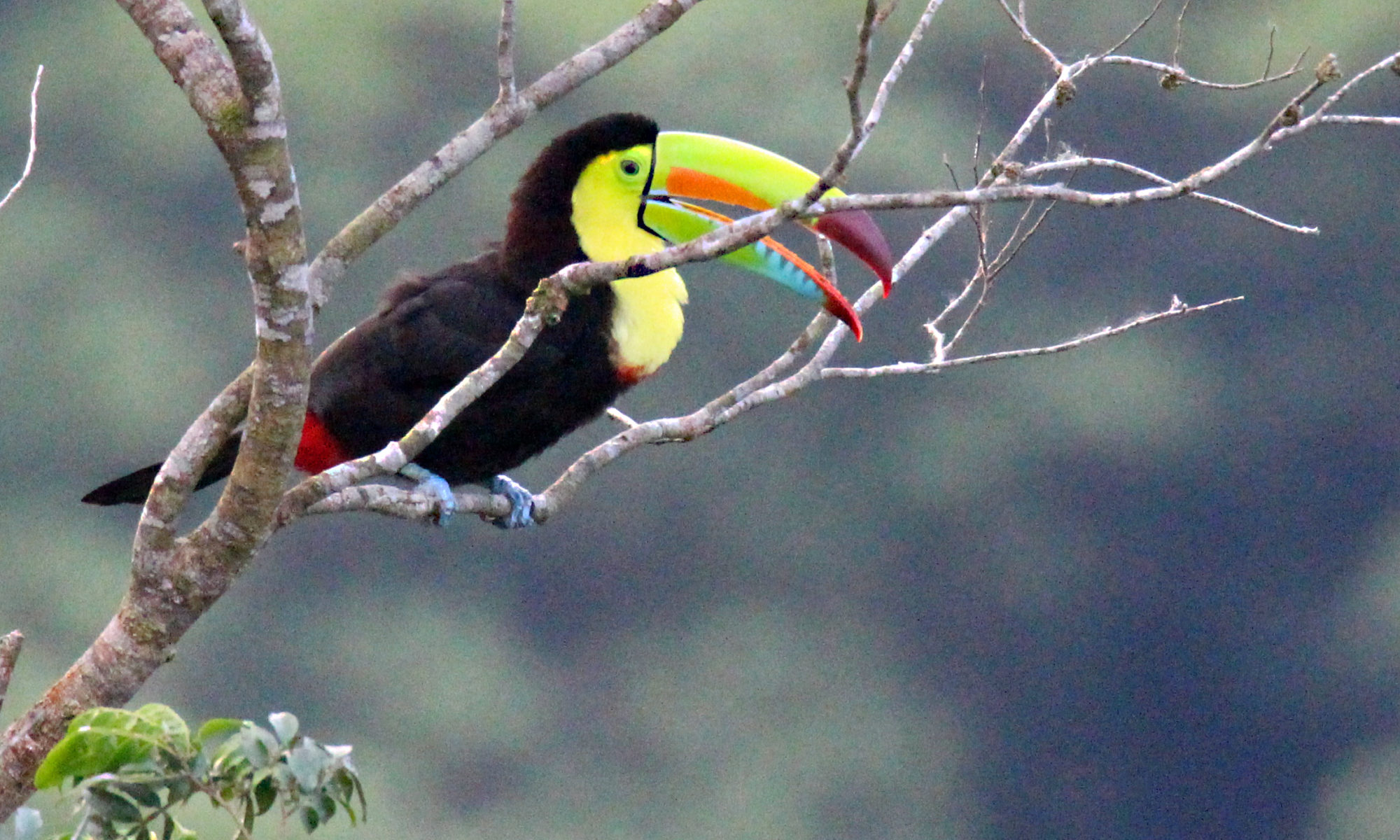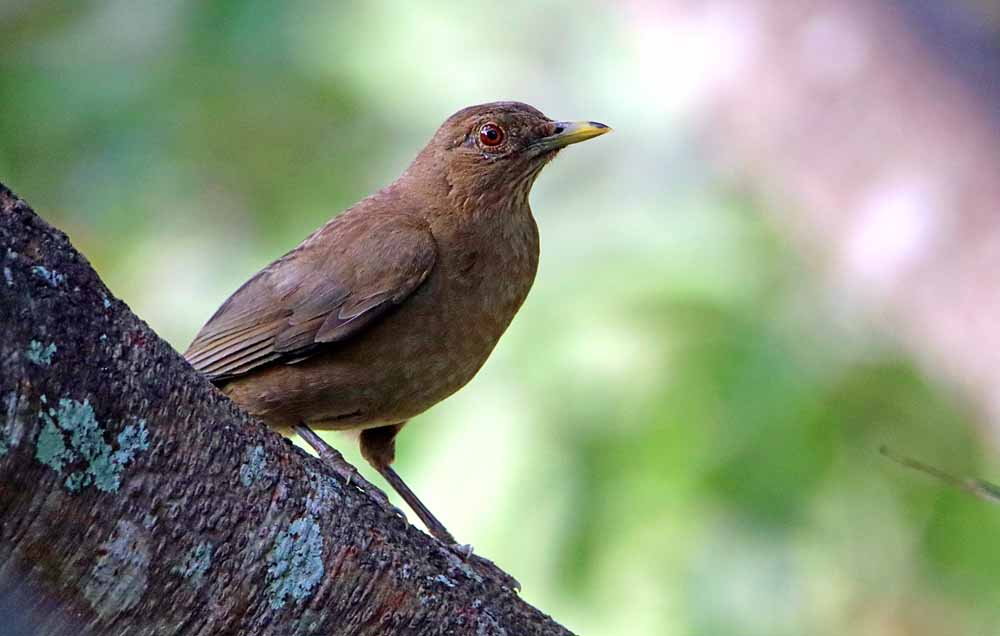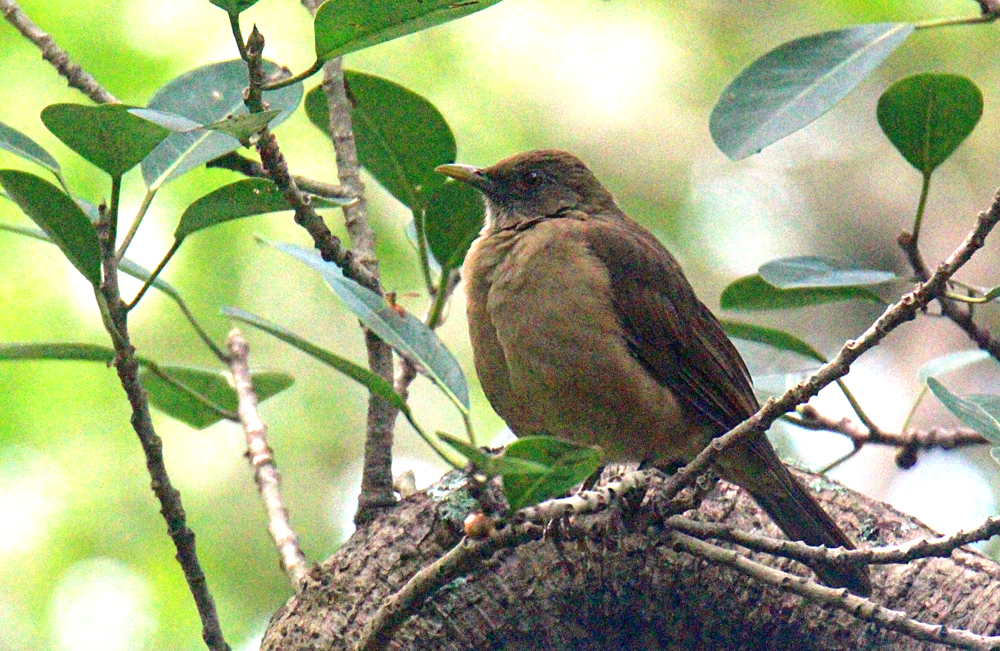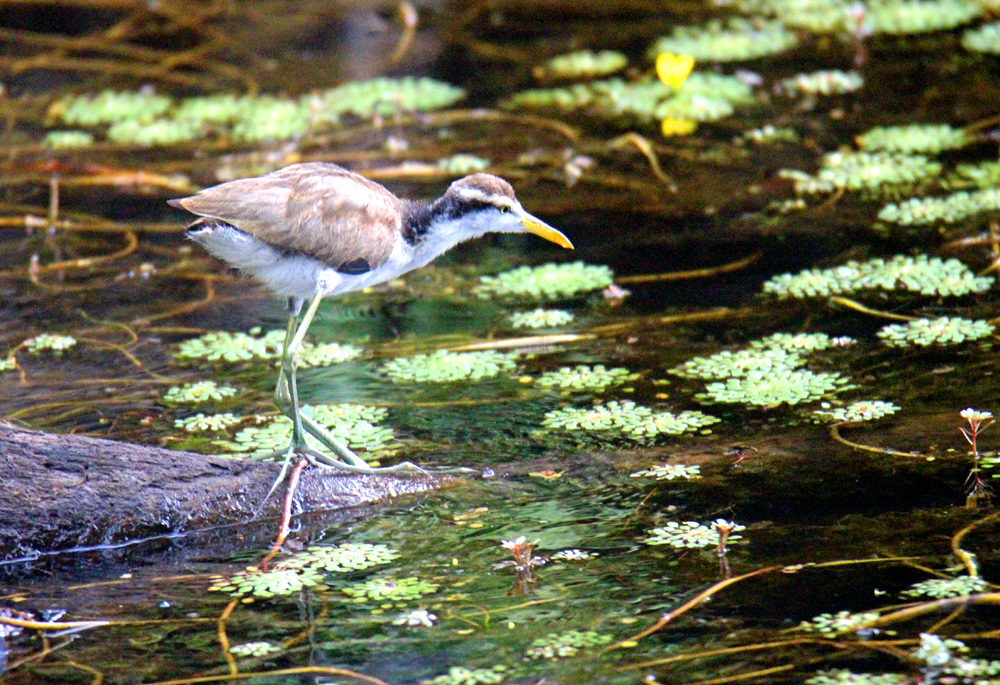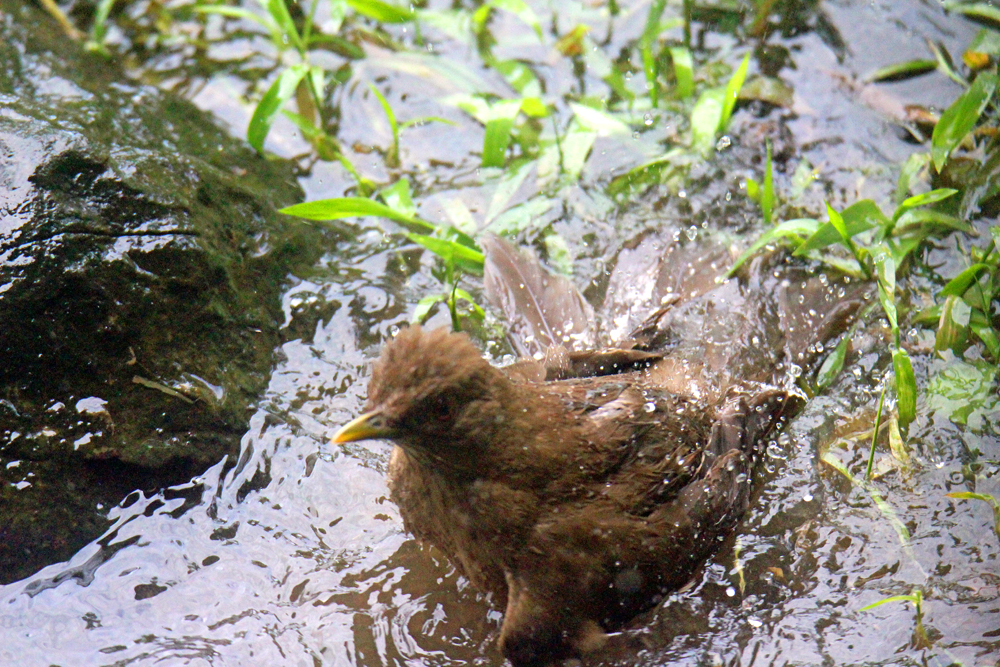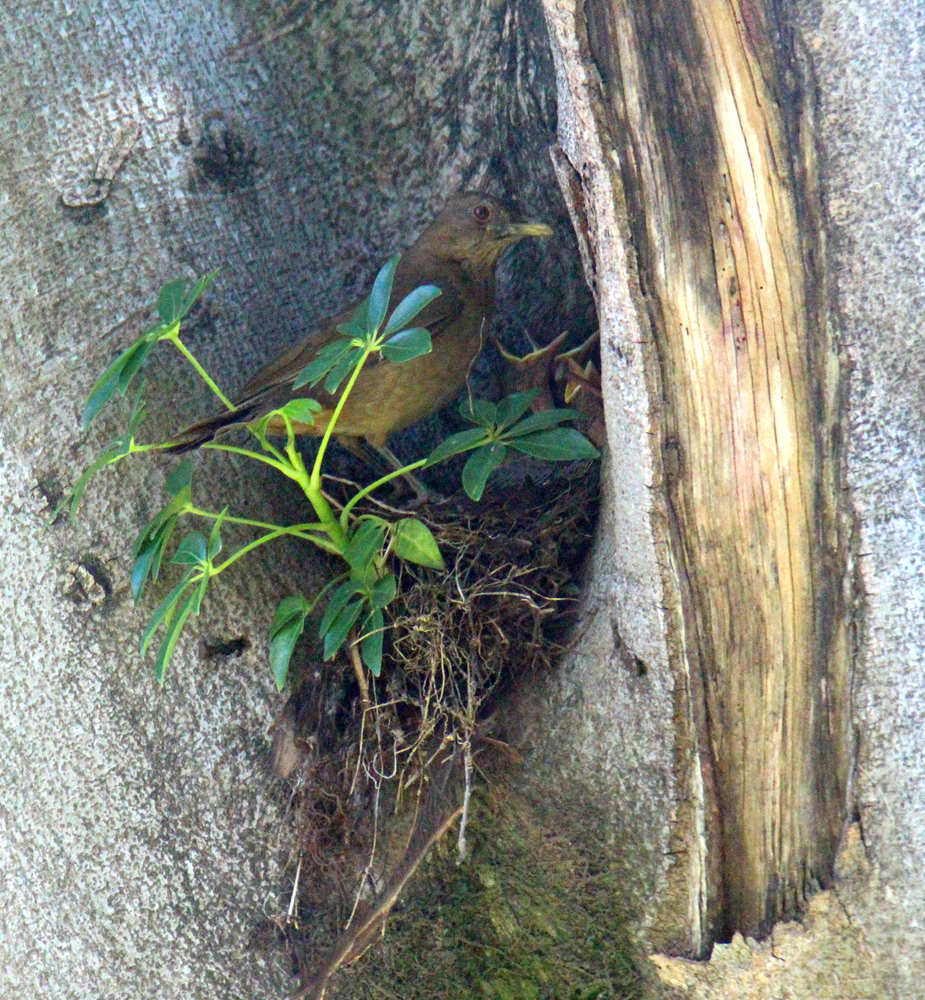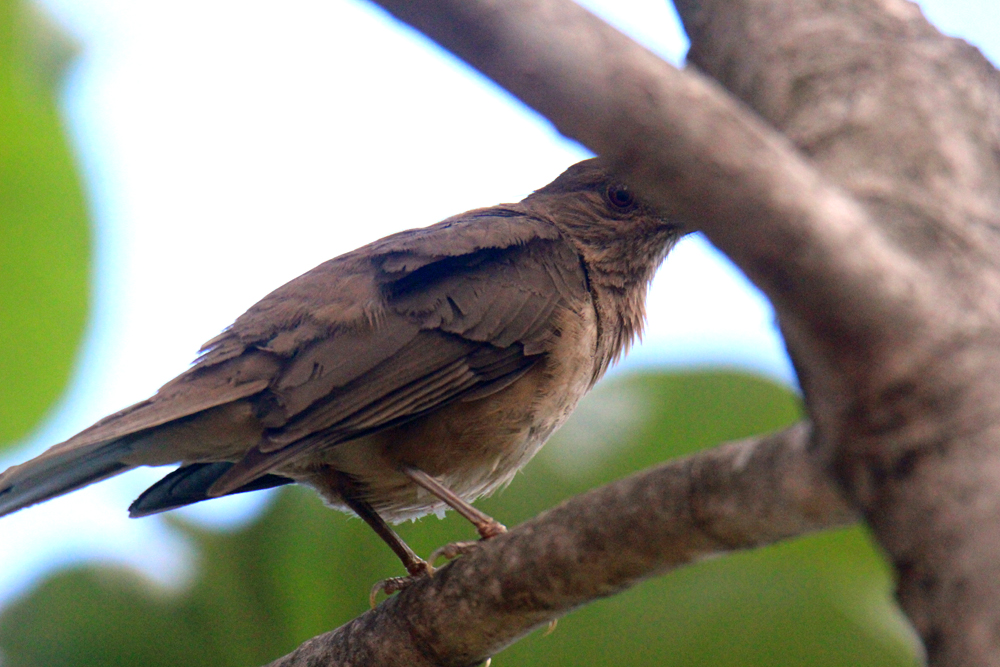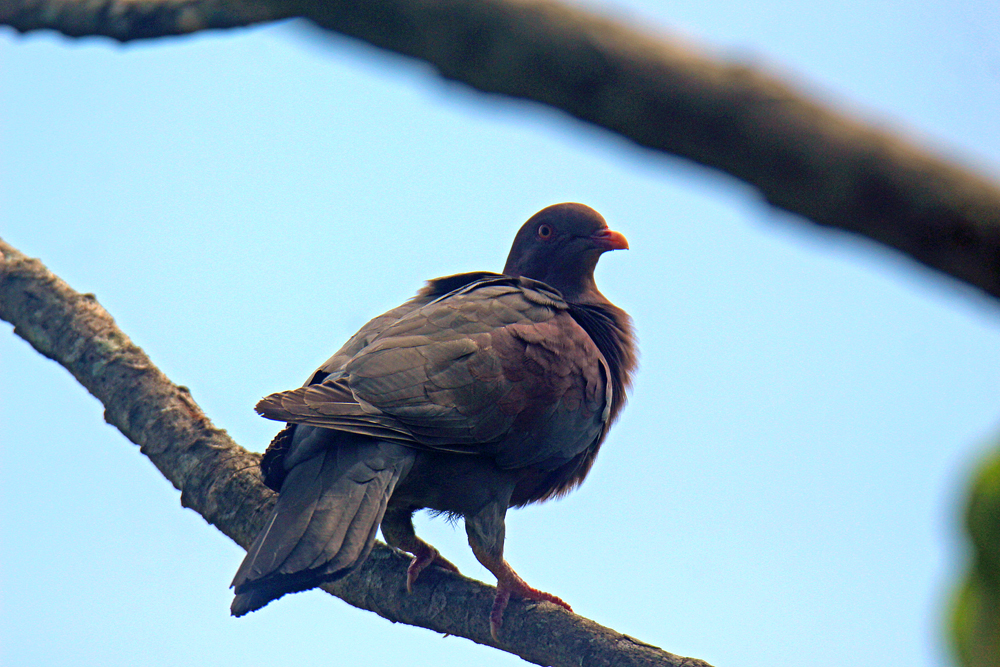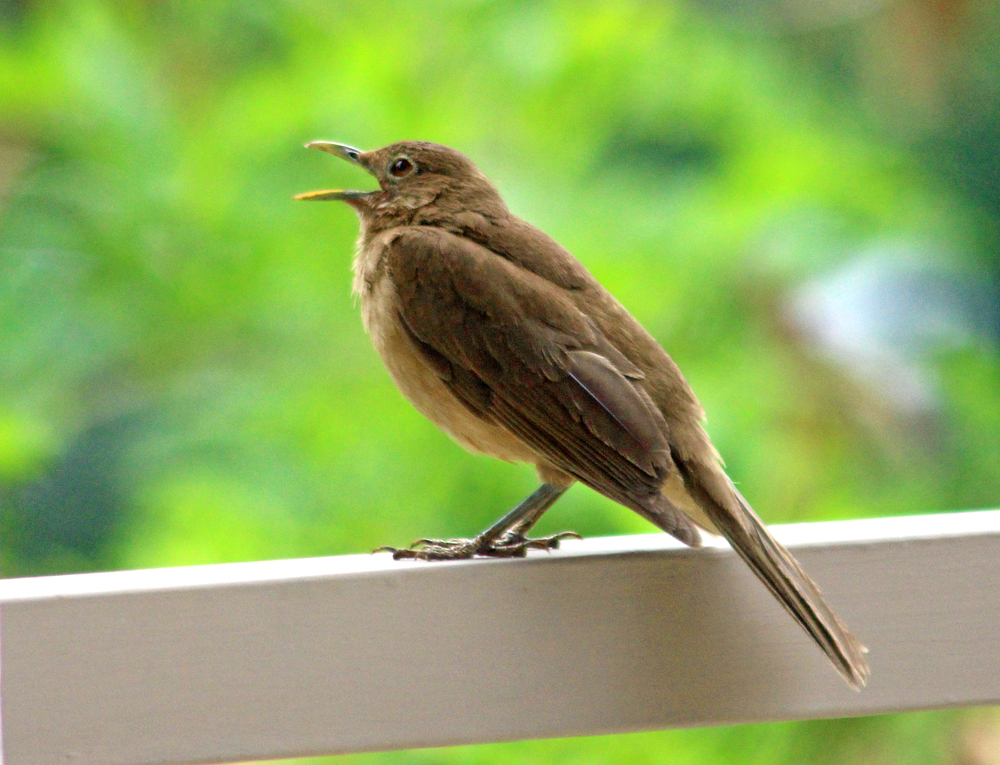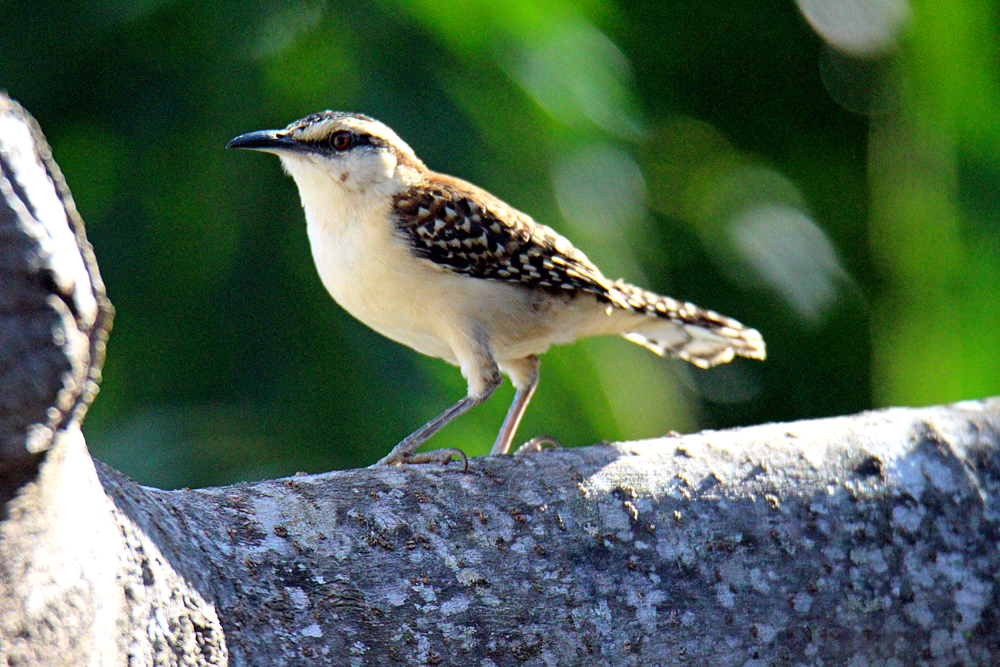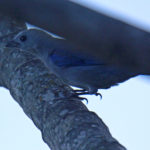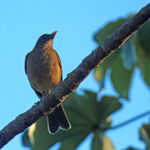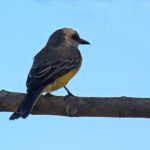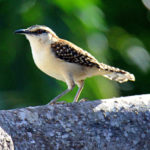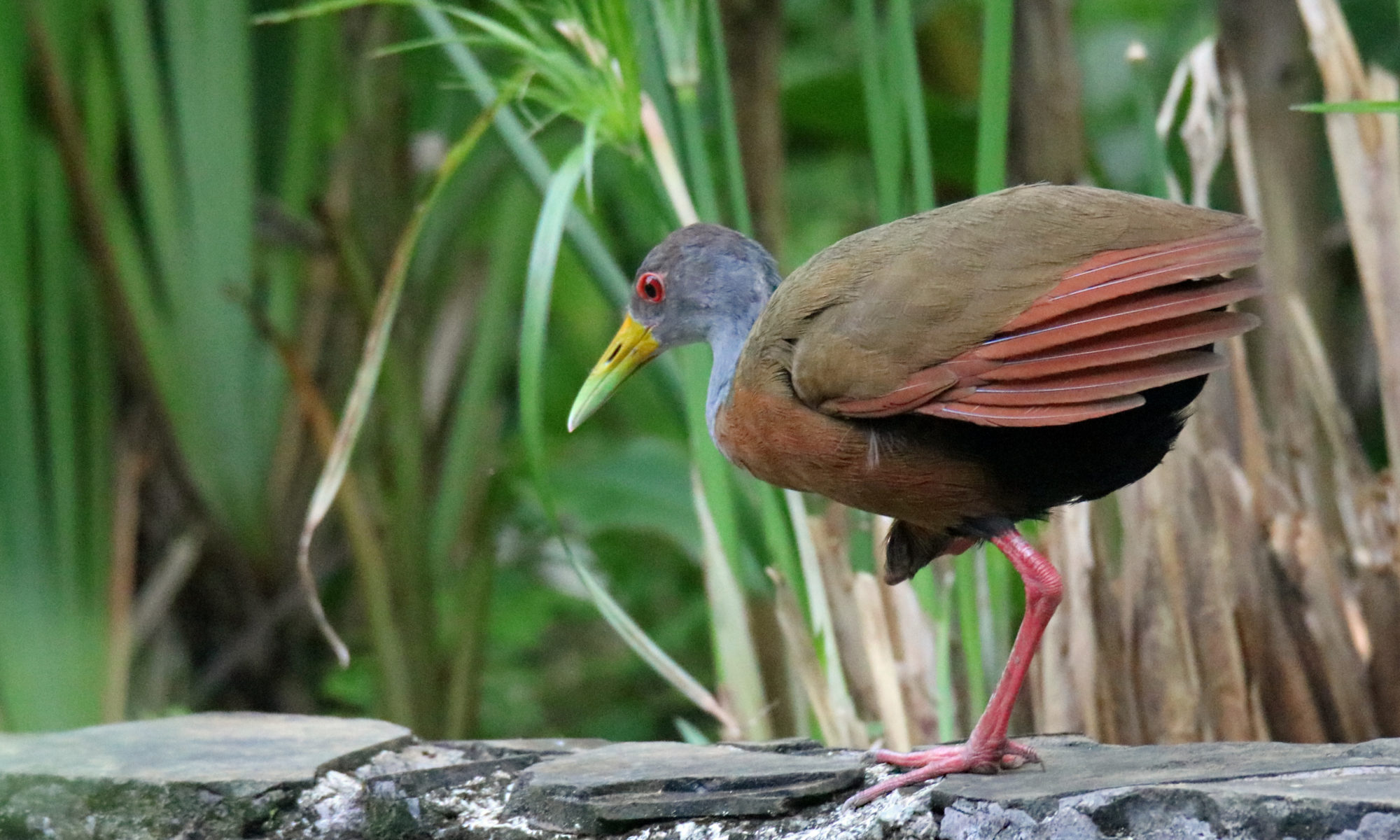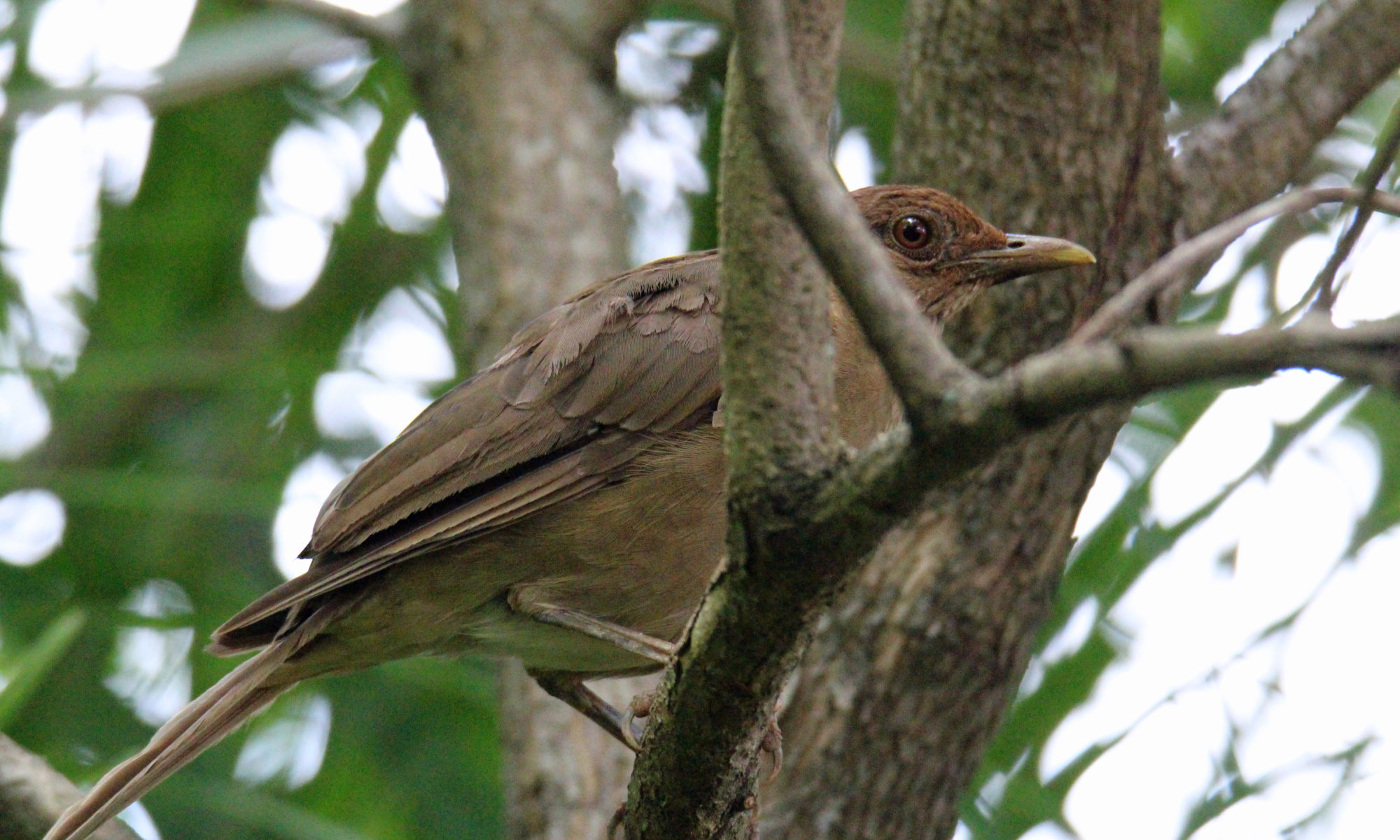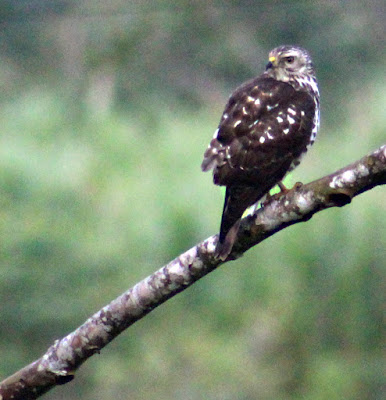The most frequently heard song in my garden in April is always the melodic song of the Clay-colored Thrush, called Yigüirro in Costa Rican Spanish. Local tradition is that he is singing in the rainy season, begging God for rain and thus he usually goes near the top of trees to sing and why my photos seldom show him singing. It sounds like he is trying really hard to do a good job and loud! As locals say, “singing his heart out!” You can hear one recording on eBird, click the “Listen” Button.
But they do come down to the lower limbs occasionally for my photos, 🙂 with these two shots from two different days. Usually we have a light start of rain the middle of April scattered over several days with the “real” rain beginning in earnest in May when we can have a shower or more every afternoon through November.
This year we had the unusual experience of 4 days of showers in March! Climate change! I live in the “Central Valley” which would not be considered a “rainforest” like both coasts and their corresponding “slopes” where it rains year around and occasionally all day. I like visiting the rainforests but the Central Valley is better for daily living. 🙂
